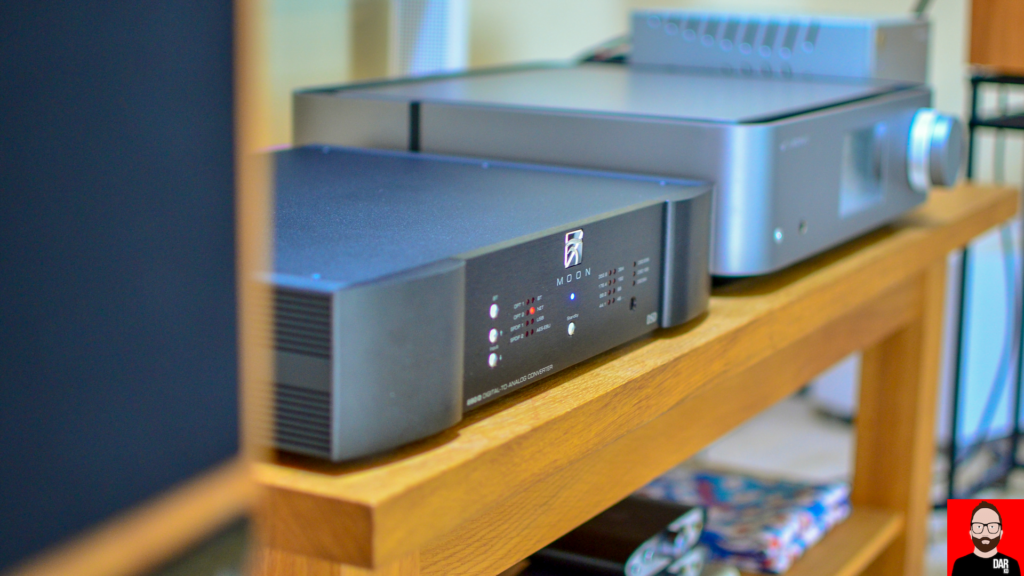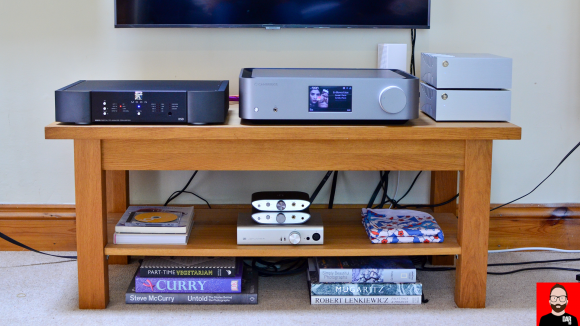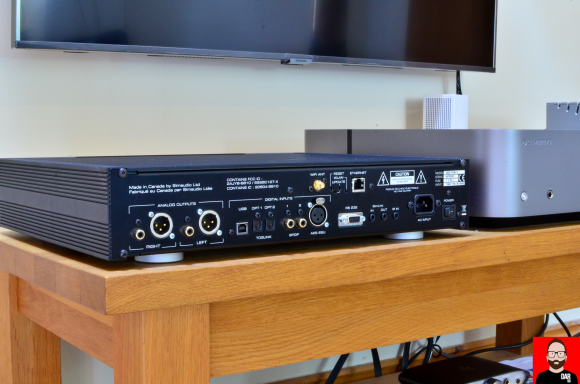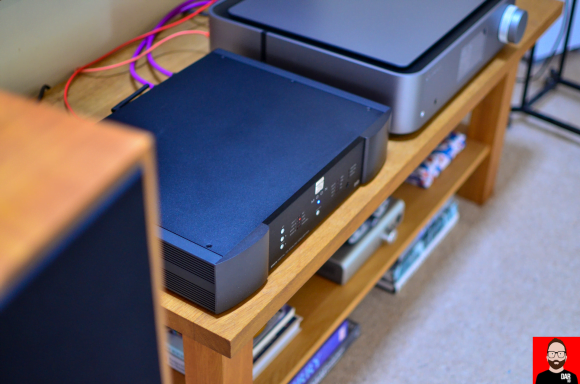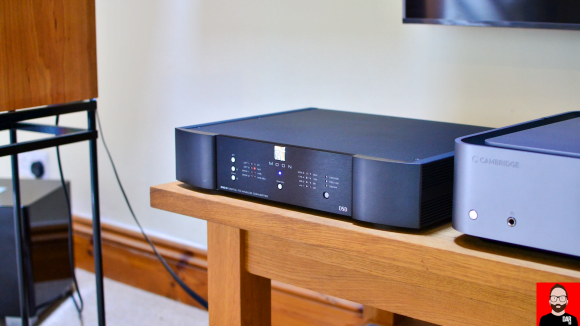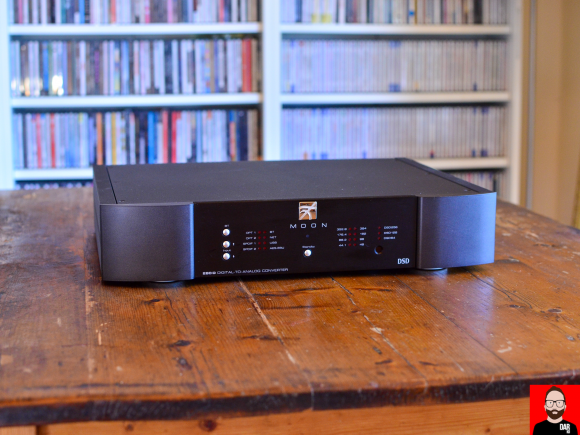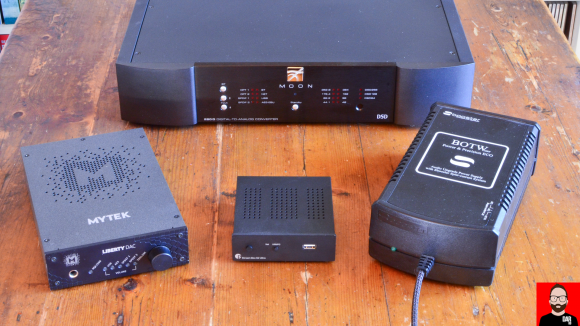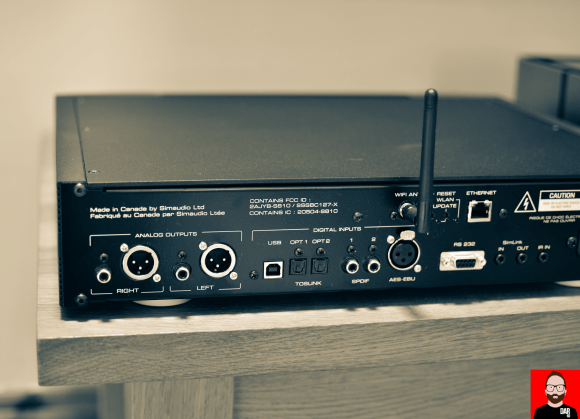Some components generate a jolt of excitement when they arrive. The recently reviewed Line Magnetic 845IA amplifier springs to mind. Others slot into the hi-fi rack without a grand entrance, ‘quietly’ getting on with the job. Moon by Simaudio’s 280D streaming DAC sits firmly in the latter category.
Understated it may be, but when the 280D replaced the streamer and DAC from Cambridge Audio’s Edge NQ, I didn’t notice much of an immediate difference. That’s no mean feat given the Edge NQ has become a firm favourite Chez Wright. That first impression boded well for what would follow.
The 280D sells for £2,950 / US$3,000 / €3,700. The Edge NQ is a bit more – £4,500 – but that includes a pre-amplifier so they’re roughly price-equivalent on the high-end streaming DAC front. Comparing them would be a fair contest.
I left the Moon unit playing in background mode for a week or so before settling down to some active listening. Would the Canadian-made device reveal hidden talents over the long haul? Or would the 280D turn out to be a sonic doppelganger to the Edge NQ? I’d happily settle for that.
What you get
In Moon’s naming convention the first number indicates a product’s level of performance – the higher the better – and the second the type of device. 280D reads as the baby (2) of their streaming DACs (8). By contrast, top of the tree is the £13.5k 780D V2.
The revised 280D was introduced in March this year and retains the same name as the 2015 original; the new model is not designated a V2. Which I find slightly confusing but that call apparently stems from the nature of the updates: connectivity (e.g. new chip for Airplay2) and software (MiND2, Airplay 2, etc.) but not hardware.
The DAC board remains unchanged. It is built around an ES9018K2M. Not quite to the level of the Moon 390 pre/DAC/streamer (review here) that uses an ESS9026Pro, but still very credible. Besides, what sits around the chip matters as much as the chip itself. Simaudio reportedly finessed the voltage regulation and output circuits extensively in the original model, developments that carry over into the new one. In addition to the single-ended RCA connectors, fully-balanced differential outputs on the 280D have been included (according to the manufacturer) for reduced noise and greater dynamics. Both sets of outputs deliver a fixed output voltage, with no provision for volume control. Headphonistas are also passed over: there’s no headphone output.
On the rear of the 280D we see 1 x USB (for which Windows users need a driver), 1 x AES/EBU, 2 x SPDIF on RCA and 2 x optical inputs. There’s also aptX Bluetooth plus network streaming via Ethernet or Wi-Fi. The USB and Network inputs support up to DSD256 and 32bit/384kHz PCM. There’s no provision for playing from a USB drive, an omission that didn’t fuss this listener. Full MQA capability is present. You can decide whether the 280D’s lack of user-selectable DAC filters is a plus or a minus. I welcomed it – fewer variables to consider.
There’s also a remote control that works with other Moon devices as well. I only used it to change inputs on the 280D. Or use Moon’s SimLink system that allows control of Moon devices without the need for a remote control. Press standby on one for example and they all power down. You just need all SimLink devices to be wired together.
All in all, it’s a decent spec, boosted by a 10-year warranty. Anyone needing analogue inputs, HDMI or phono capability might look to the Moon 390, whose feature set is more comprehensive.
Looks / build
My review sample came in all-black attire, making it rather anonymous (good) albeit a swine to photograph. Silver is available, as is Simaudio’s two-tone silver/black, which would also get my vote. The 280D is a full-width component but being physically low and quite shallow it doesn’t draw attention to itself. Build quality is up to the usual Simaudio level, no corners cut for an entry-level model.
The front panel is unchanged and straightforward, with two buttons to scroll through the inputs, another to engage Bluetooth and a fourth for standby. A double column of LEDs shows which input is in play. Another shows the PCM sample rate, a final single column the DSD rate. The only omission is MQA – you need the MiND2 or Roon app to verify its presence, there’s no fascia LED to confirm it’s playing.
MiND2
The big change in the new 280D is that the streaming module is no longer optional and moves us from MiND to MiND2. I’d previously encountered MiND2 in the Moon 390 review. Sonically, that unit was a gnat’s whisker from the lovely dCS Network Bridge. Usability was good too. From that review:
“MOON’s streaming platform, now in its second iteration, is a joint development where in-house expertise is supplemented by third parties, notably Stream Unlimited who supply network cards and associated software to several high-end manufacturers. MiND 2 differs in that it’s a bespoke development, using Stream Unlimited’s expertise and some elements of their network card, but not the whole card.”
MiND2 is a platform that has evolved over time, the latest additions being Spotify Connect and Airplay2. Spotify Connect should play the lossless version of Spotify when it arrives. On Airplay 2, Simaudio initially had concerns over its longevity (was it sufficiently future-proofed?) but market forces seem to have won the day. That’s good news for Apple Music users as the service won’t be integrated into MiND2 directly.
Tidal Connect support is slated for late 2021 but that’s not a hard date. Unless you specifically want to use the Tidal app to control the 280D Tidal Connect won’t bring much anyway – MiND2 already hands the stream over to the 280D, you don’t need to keep the MiND2 app open. Other services provided by MiND2 include Deezer, HighResAudio.com and Qobuz, as well as radio and podcasts. It can also play content from UPnP servers. And, crucially for this listener, MiND2 is Roon-Ready, which is how it was used for most of the review.
The MiND2 app is available on iOS and Android, and the user interface is good. As with many software control apps, its UI shines brightest on a tablet. One neat feature is the sophisticated play queue that can mix and match tracks from different music services. I found the MiND2 app to be reliable, discovering the 280D quickly, and the connection was stable. All in all the MiND2 platform seems to be one of the better network streaming solutions, on usability up there with dCS’s Mosaic. Even if Roon is still king!
Review components
Graham LS6 speakers (£2,300) were fed by Gold Note PA-10 monoblocks (£1,300 each) with the Edge NQ (£4,500) acting as pre-amplifier. The Moon 280D played through the Edge NQ’s balanced input and was compared to the Edge NQ’s own streamer & DAC.
To triangulate my findings, a Pro-ject S2 Stream Ultra / Mytek Liberty / SBooster streamer & DAC combination (£1,800 total) was also plumbed into the Edge NQ via a balanced input. And partway through proper listening, two REL T5x subwoofers (£650 each) were installed, allowing me greater insight into what, if anything, the 280D might do to the bottom octave (20Hz – 40Hz).
Listening
‘Refined precision’ best characterises the 280D’s sound. The level of detail provides plenty of ambient clues as to where musicians sit within the sound field, and there’s abundant air around them. The picture presented is no line drawing though – there’s no trace of edginess – and tonal shading and colours are abundantly evident. Take Michel Godard’s rather leftfield Monteverdi, A Trace of Grace: a lovely recording, the acoustic space of the cathedral-like venue is painted between the loudspeakers by the Moon as a very believable panorama.
Switch to the Edge NQ and the treble is marginally more extended – more air, more detail but still no edginess. Think PCM versus the slightly smoother sound of DSD. Some will hear the 280D as gentler, some will consider it more refined. Some, frankly, won’t hear the difference. It only became apparent to yours truly after many hours of detailed listening (and careful matching of levels). The delta isn’t of great consequence.
The 280D performs equally well across the whole frequency spectrum. Midrange passes the acid test of female vocals with aplomb, coming over with warmth but not overly-rich, and with clarity but not under-nourished. The sparse beauty of Cande Y Paulo’s ‘Treaty’ (a Leonard Cohen cover, on Cande Y Paulo) is stunning; seek out their Tiny Desk concert.
Bass is also good – allowing the REL subwoofers to dig deeper and with control. Here, the Edge NQ is slightly different: it’s marginally tighter. The difference is akin to stuffing the port of a speaker to tighten its bass. This can often bring a slightly artificial edge to the sound, a certain natural feel being lost. Some will prefer one approach, some the other. Again don’t sweat it. The difference is small.
Play something like Infected Mushroom’s ‘Bliss on Mushrooms’ from Head of NASA and the 2 Amish Boys and any differences in low-frequency performance evaporate. A riotous mix of bass and electronics, both the Edge NQ and 280D let rip gloriously (1’30” in). So much for sweet spots, I was bouncing around like Tigger on a sugar rush, fuelled in part by the dynamic swings from both devices. I ran a few more ‘big’ stalwarts through the 280D – Metallica, Queen, Grace Jones, Beth Hart, etc. – with similar results. The 280D is no one-genre pony.
Elsewhere the 280D and Edge NQ matched each other toe to toe. Tonal balance-wise, they’re cut from the same cloth. The tangibility of performers is good on both. Differences between them were few and small; of academic – rather than musical – interest. We might even call them doppelgangers.
Taking a Liberty
Time to wheel in my daily driver: Pro-ject’s S2 Stream Ultra streamer, Mytek’s Liberty DAC and an SBooster power supply. A trio that often vies for equal billing with more costly kit, such as the Edge NQ.
And it all but keeps up with the Moon 280D, again similarities between the two setups swamping any differences. From the trio there’s a soundstage that is rarely bettered on breadth and depth, detail aplenty, artists you can almost reach out and touch and bass control that’s good both with and without the REL subwoofers in the circuit.
Switching to the 280D brings little change; bass remains extended but controlled, detail is on a par, palpability is good. The Moon does appear to be a little more extended at the top end. Then I realise it’s more that the 280D is slightly more organised overall, musicians more distinct, notes hanging better, the silence between them quieter. Jamie T’s voice and guitar cover of Billy Bragg’s ‘A New England’ is a case in point. Sparse and rough, the Moon 280D pares it back even further to highlight the powerful delivery.
The difference is similar to what I hear when better power supplies are introduced into a system (e.g.with an RPi), when electrical noise is reduced. I can speculate whether that’s the case here – three disparate boxes may well be noisier than one well-sorted unit. Whatever, the Moon 280D just about trumps the Pro-ject / Mytek / SBooster combination, albeit by a small margin and not really worth hitting the ‘upgrade’ button for if you’re already in possession of said three-fer. That said, if I were starting over, I’d plump for the Moon as I rarely use the Mytek’s digital volume control or headphone output.
Conclusion
If you’ve read the review so far you know the conclusion. If you’ve jumped straight here it’s simple, the Moon 280D sounds almost identical to the streamer & DAC in Cambridge Audio’s Edge NQ. And yet the Moon 280D is even more impressive (in the positive sense of the word). It’s like Keanu Reeves: quietly spoken much of the time but capable of (sonic) mayhem when needed. If I had £3k to spend on a straightforward streaming DAC – no volume, no pre-amplifier – then the Moon 280D would be on the shortlist.
Further information: Moon by Simaudio

